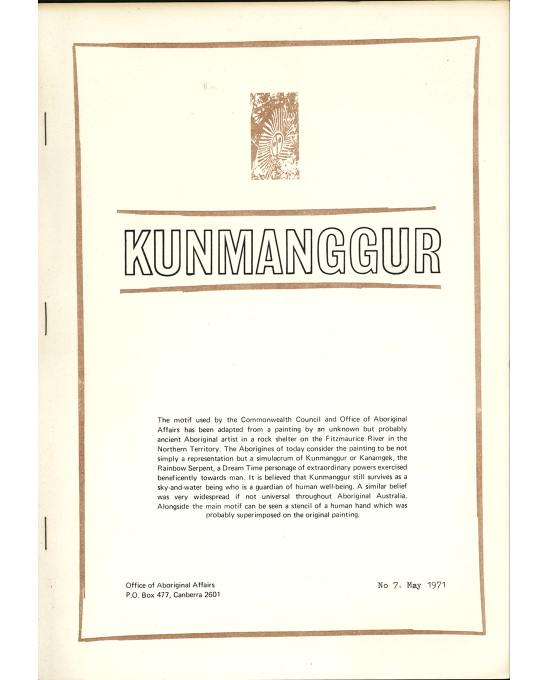
Article marks ABSTUDY successes
An article about a new Aboriginal study grant profiled 3 of its early success stories – people who would go on to be well-known public figures over the decades ahead.
The Aboriginal Study Grants Scheme began in 1969, and some very encouraging success stories of students receiving grants are now emerging.
| Attachment | Size |
|---|---|
| kunmanggur-excerpts.pdf | 944.74 KB |
| Attachment | Size |
|---|---|
| kunmanggur-excerpts.docx | 83.68 KB |
The government introduced the Aboriginal Study Grants Scheme in 1969 to give financial support to Aboriginal and Torres Strait Islander students. It helped students attending college or university. Today it is part of the ABSTUDY program.
This 1971 article detailed the success of 3 students in the new program. The story appeared in the seventh volume of Kunmanggur, a journal published by the Commonwealth Council and Office of Aboriginal Affairs. It aimed to use ‘very encouraging success stories’ to highlight the value of the grant scheme and inspire readers to apply.
The students’ early success
The 3 students the article profiled were Patrick Dodson, John Moriarty and Roslyn Watson.
Dodson received a grant to study modern history at the Australian National University in Canberra. Moriarty used his study grant to finish his Arts degree at Flinders University in South Australia. Watson received a grant to continue her ballet studies.
The students’ future careers
The writer could not have known that these students would all build highly successful careers in their respective fields over the coming decades.
Dodson, a Yawuru man, became a strong advocate for Aboriginal rights, and has been referred to as the Father of Reconciliation. He served as a senator in the Australian Parliament.
Yanyuwa man Moriarty was already the first Aboriginal football player selected to represent Australia. He had actively campaigned for Aboriginal rights, including in support of the 1967 Referendum. In finishing his studies Moriarty became the first Aboriginal person to graduate from a university in South Australia.
Muninjarli and Birri Gubba woman Watson became Australia’s first Aboriginal classical ballet dancer. After graduating from the Australian Ballet School, she danced and choreographed for many dance companies in Australia and overseas.
Promoting the Aboriginal Study Grants Scheme
This source shows early promotion of ABSTUDY’s success and the government’s efforts to encourage students to apply.
While the tone of the piece is very positive, it focused only on individual success stories. It did not address the inequalities in education that many Aboriginal children still faced before they were old enough to apply for ABSTUDY assistance.
The Kunmanggur cover page used an artwork adapted from a photograph taken by anthropologist WEH Stanner in the 1950s. Stanner was involved in the Office of Aboriginal Affairs in the late 1960s and early 1970s.
Information was provided by Mark Crocombe about the original art work. It is on Country of Rak Kimul people. The Traditional Owners are the Dodd and Raymond families. The artwork is in a rock shelter in Purmi, west of Kimul, in the Fitzmaurice River region, Northern Territory. Crocombe explained that the art work shows a part of the big story for this region of Kanamkek – Thiniminh or Bat and Rainbow (Crocombe 2023, personal communication).
Original Kunmanggur volumes are held in the National Library of Australia.
Permissions
Permissions were given for the reproduction of this article by Senator Pat Dodson, John Moriarty AM and Roslyn Watson.
Consultation with Basil Dodd, with the facilitation of Mark Crocombe, was undertaken to confirm the reproduction of the artwork here was appropriate.
Citation
Commonwealth Office of Aboriginal Affairs (May 1971) ‘Aboriginal Study Grants Scheme’, Kunmanggur, Australian Government.
